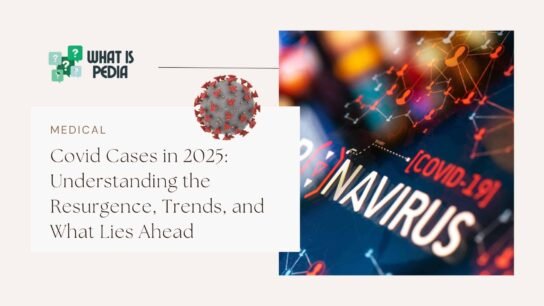In the fascinating world of biology, DNA serves as the blueprint of life. It holds the instructions necessary for the development, functioning, growth, and reproduction of all living organisms. But have you ever wondered, what is the importance of DNA copying in reproduction?
This question isn’t just part of your CBSE biology class 10 syllabus — it is central to understanding the very process of how life continues across generations. DNA copying plays a crucial role in ensuring that offspring receive the genetic material of their parents. It is this process that maintains life’s continuity while introducing variation — the very fuel of evolution.
In this blog by Whatispedia, we’ll explore the concept deeply and answer popular search queries like why is DNA replication important in reproduction, how DNA copying helps in reproduction, and what happens if DNA is not copied properly. Let’s dive in.
🧠 Understanding DNA Copying: The Core of Reproduction
At the heart of every cell lies DNA — a complex molecule carrying genetic instructions. DNA copying, also known as DNA replication, is the biological process of producing two identical replicas from one original DNA molecule.
So, what is the importance of DNA copying in reproduction?
DNA copying ensures that every new cell or offspring carries the genetic material of its parent. Whether it’s a single-celled organism reproducing asexually or complex human beings reproducing sexually, accurate DNA replication is vital for preserving the characteristics of the species.
🧪 Why is DNA Replication Important in Reproduction?
Let’s break down the biological significance.
- Genetic Continuity Across Generations The first and foremost importance of DNA copying in reproduction is the preservation of genetic information. Without DNA replication, new cells or organisms wouldn’t inherit the essential instructions needed for life.
- Growth and Cell Division In multicellular organisms, growth is possible due to cell division. Before a cell divides, it must duplicate its DNA. This process ensures that both daughter cells get identical chromosomes and DNA copies.
- Formation of Gametes in Sexual Reproduction In humans and animals, DNA copying occurs during the formation of gametes (sperm and egg cells). These cells carry half the genetic material of each parent. Upon fertilization, the complete genetic code is restored in the offspring.
- Variations Lead to Evolution DNA copying is not always 100% error-free. Small changes or mutations during DNA replication create genetic variation. These variations, though subtle, can lead to significant evolutionary changes over time.
🧬 DNA Copying Meaning in Biology
Biologically speaking, DNA copying means making an exact copy of the entire DNA molecule to ensure that each daughter cell or offspring has the complete set of genetic inheritance. This process happens with the help of special enzymes like DNA polymerase and involves unwinding the DNA helix, matching base pairs, and forming new strands.
When students in India search for “DNA copying meaning in Hindi,” it’s often translated as “DNA की नकल,” but more precisely, it’s a biological duplication process, not just a simple copy-paste.
🧫 How Does DNA Copying Help in Reproduction?
To answer how does DNA copying help in reproduction, let’s use a simple analogy.
Imagine a recipe book (DNA) for making your favorite dish (an organism). If you want to share this with someone else (offspring), you’d need to replicate the book accurately. Similarly, DNA copying allows reproduction to pass the correct ‘recipe’ from one generation to the next.
In asexual reproduction, like in bacteria, a single cell divides to produce identical copies. In sexual reproduction, DNA from two individuals combines, but the copying process ensures that each parent contributes the correct half of the information.
🔍 What Happens if DNA is Not Copied Properly?
DNA replication isn’t always perfect. Occasionally, errors in DNA copying lead to mutations.
- Some mutations are harmless or even beneficial.
- Others can result in genetic disorders, birth defects, or cancer.
- In some cases, errors can be corrected by cellular mechanisms, but persistent copying mistakes may lead to abnormal reproduction or unviable offspring.
This is why what is the importance of DNA copying in reproduction also ties into discussions about cell health, genetic accuracy, and life sustainability.
🧠 DNA Copying and Genetic Variation: Nature’s Smart Trick
One of the biggest advantages of DNA copying during reproduction is that it introduces variation. These variations:
- Help organisms adapt to changing environments
- Contribute to evolution and natural selection
- Enable survival of species in challenging habitats
This directly addresses another search-intent query — dna copying and genetic variation. In fact, genetic diversity in Indian agriculture, human populations, and even microbial life stems from this principle.
🧬 How is DNA Replicated During Cell Division?
To understand how is DNA replicated during cell division, we need to revisit the cell cycle:
- Interphase (S phase): The cell prepares by replicating DNA. Enzymes unwind the double helix, exposing the nucleotide bases.
- Base Pairing: Adenine pairs with Thymine (A-T) and Guanine pairs with Cytosine (G-C), creating two identical DNA strands.
- Proofreading and Sealing: DNA polymerase checks for errors, and ligase helps seal the fragments. The result: two identical DNA molecules passed to daughter cells.
This cellular process forms the foundation of all life forms — from a bacterium in the Ganges River to a student studying NEET in Delhi.
🧬 Role of DNA Copying in Sexual Reproduction
In sexual reproduction:
- Two parents contribute half of their DNA.
- Before gametes form, DNA is copied during meiosis.
- These gametes combine to form a zygote with complete genetic information.
This ensures traits and characteristics (eye color, height, diseases) are passed on. This directly answers role of dna copying in sexual reproduction and emphasizes how genetic identity is managed across generations.
🔄 Does DNA Copying Affect Offspring Traits?
Yes — absolutely!
DNA copying determines:
- Which genes are passed down
- How traits are expressed
- Whether genetic conditions appear
If DNA copying is inaccurate, it might result in:
- Altered traits (eye color mutation)
- New traits (beneficial mutation)
- Disorders or diseases (if faulty genes are inherited)
Thus, the answer to does dna copying affect offspring traits is a loud yes, reaffirming once again what is the importance of dna copying in reproduction.
🧬 Importance of DNA Replication in Heredity
Heredity is the biological process of passing traits from parents to offspring. And DNA replication is the mechanism that makes heredity possible.
When NCERT biology mentions heredity in the context of Mendel’s laws, DNA copying is the invisible hero ensuring that dominant and recessive genes are passed faithfully.
In fact, importance of dna replication in heredity is a top topic for biology tuition for dna copying and reproductive biology topic in India for competitive exams like NEET and AIIMS.
📚 Indian Education Context: DNA Copying in Syllabus
If you’re a student in India, you’ve likely encountered this topic in:
- NCERT Class 10 Science Chapter: Heredity and Evolution
- NEET Biology Syllabus: Cell Structure and Genetics
- State Board Biology: Reproductive systems and genetic inheritance
These textbooks emphasize what is the importance of dna copying in reproduction in India not just for exams but to understand life sciences, medicine, and biotechnology.
🧪 Mutation During DNA Replication: Boon or Bane?
While mutations are errors, they aren’t always harmful. Controlled mutations (via biotechnology or evolution) have given rise to:
- New species
- Disease-resistant crops
- Medicinal gene therapies
But harmful mutations due to faulty DNA copying may lead to:
- Cancer
- Sickle-cell anemia
- Down syndrome
Hence, while mutation during dna replication is natural, its impact depends on where and how the copying went wrong.
🧬 Blueprint of Life: Why It Must Be Copied Carefully
The phrase “DNA is the blueprint of life” is often used to express its code-like function in building living organisms.
When someone searches “blueprint of life and dna replication explained for Indian students,” what they really want is a simple realization:
DNA carries coded instructions. If copied incorrectly, the building (organism) either changes or collapses.
That’s why the genes and traits transfer process depends critically on accurate DNA replication.
🧬 Summary: Why DNA Copying Matters
Let’s come back to the question we began with: What is the importance of DNA copying in reproduction?
- It ensures genetic continuity
- It enables accurate inheritance of traits
- It allows growth and reproduction
- It introduces genetic variation for evolution
- It supports medical, agricultural, and scientific innovations
Whether you’re preparing for a CBSE exam, working in genetic research, or just curious about how life works — DNA copying is one of biology’s most powerful processes.
📌 Local Relevance and Career Insights
In India, where biotechnology, forensics, agricultural genetics, and medicine are booming fields, understanding what is the importance of dna copying in reproduction isn’t just academic — it’s career-changing.
Students, researchers, and professionals alike are encouraged to explore this further through:
- NEET prep classes in Delhi, Kota, Hyderabad
- Genetics and molecular biology degrees
- NCERT books and state board biology DNA questions
🧠 Final Thoughts from Whatispedia
DNA copying is not just a chapter in a textbook — it’s the very essence of how life sustains itself, evolves, and adapts.
Understanding what is the importance of DNA copying in reproduction gives you insight into everything from your family tree to cancer research, from genetic engineering to agricultural development.
At Whatispedia, we’re committed to simplifying complex biological questions for learners across India. Bookmark this blog, share it with fellow students, and explore our other science explainers to ace your next biology challenge.







